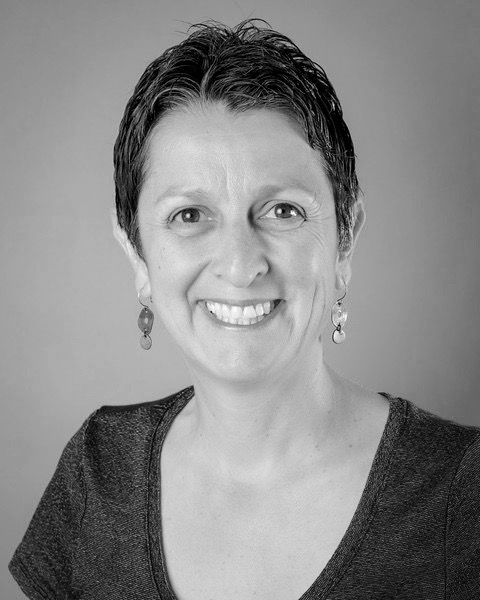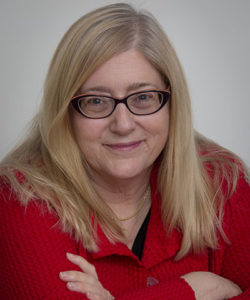The Spectrum of Sex
By one of those odd life quirks that happen now and then Professor Nieto was (in real life) one of my key influencers, teachers, mentors and guides during my studies for my MS in Cell and Molecular Biology a mere thirty years ago. I’m delighted our paths have crossed again! My conversation with Dr. Nieto is below.
Hida Viloria, a leading intersex activist, and Maria Nieto, a scholar in the biological sciences, collaborated on this important new work.
The Spectrum of Sex: The Science of Male, Female, and Intersex published in February 2020. The book challenges our understanding of sex and gender, and examines how cultural assumptions are different than the biology and lived experience of human beings.
"The Spectrum of Sex gives readers a unique dual perspective on the science as well as the experiences of intersex individuals. It's unusual for a book to do such a thorough job of making science accessible while also telling a compelling story of human experience. Read this book to not only learn about the biology of intersex, but to also gain compassionate insights for the lived experiences of individuals with sexual variance."
Jamie Marantz, Science Educator
Stella: Why did you decide to write this book at this point in your life?
Maria:
About ten years ago I began to teach a new course on campus geared for non-majors, called “Humans and Sex.” While I developed my lectures, the debate about who should or should not be able to legally marry was getting heated. As I began to learn about intersex in preparation to teach my course, I started to ask myself: If only a man can marry a woman, then who decides what determines who is a man and who is a woman? It is important to keep in mind that “man” and “woman” refer to gender and are distinct from one’s biological sex. I wrote a couple of articles on this subject, and subsequently secured a team of lawyers who worked with me, pro bono, to draft an amicus brief that was submitted to the Supreme Court of the United States in the marriage equality case surrounding California’s Proposition 8. The brief outlined the fact that there are many in the population who, before marriage equality was afforded to all people, were engaged in same sex marriages even though one in the marriage was a man and the other a woman.
How can this be? One way this could occur is if the woman in this case was in possession of XY chromosomes (sex chromosomes typically harbored by males) and was born with non-functioning androgen receptors (ARs) that resulted in an inability to sense the effects of testosterone. If this woman married a typical XY male, could she not be considered to be in a same sex marriage? The topic fascinated me and led me to write a book with my co-author Hida Viloria, in an attempt to enlighten readers to the wondrous, beautiful and natural variation in sex and gender that exists.
Stella: Reading your book about intersex led me to wonder whether every variation we see in the wider spectrum of straight, gay, transsexual and intersex might also have a biological basis, perhaps more difficult to define? And if so, what would be the pros and cons of defining all that?
Maria:
When we think about intersex we are focused on biological sex: there are males, females and intersex persons (those whose bodies do not fit the typical definitions of male or female). In comparison, when many people think about gender one’s behavior is taken into account, not necessarily one’s chromosome composition or reproductive anatomy. Even though gender (one’s self-perception) cannot be determined from one’s genetics or anatomy, this does not mean it is not biologically based. There is growing evidence to suggest that the brain plays a role in shaping our gender, but the research is in its infancy.
As my co-author, Hida Viloria, explains in The Spectrum of Sex, “…sex and gender have been historically conflated whenever necessary to uphold our socially constructed notions of each.” For example, when we see a person on the street with culturally defined “feminine” features we will most likely assume, if asked, that they are female and in possession of XX sex chromosomes and internal and external reproductive/sexual tissues that include but are not limited to a uterus, ovaries and clitoris. We will also assume that these persons identify as women with regard to their gender or self-perception.
For most of us the terms sex and gender have the same meaning. However, does conflation of the sex and gender terms work in the case of a transgender person who lives their life as a woman, yet was born with XY sex chromosomes and internal/external reproductive tissues typically found in a male? And what is the gender of the intersex person who may appear as a woman in terms of cultural expectations, yet be in possession of XY sex chromosomes and reproductive/sexual anatomy that is a mix of what is typically found in a male and female? If we acknowledge the natural spectrum of sex, and take into account the diversity in gender too, there is room for so many beautiful possibilities.
Who one finds sexually attractive, with regard to the person’s sex and gender, defines their sexual orientation. For example, a person who is sexually attracted to another person, regardless of this person’s sex or gender, would be considered pansexual. A person who is not sexually attracted to any person would be considered asexual. Although there are research data to suggest that sexual orientation is biologically based, there is no one responsible gene(s) or brain region(s) to point to. And really how could there be? After all, do we understand what determines the nature of intelligence or any complex behavior for that matter?
Animals, including humans, are complicated; our behaviors are determined by how our biology intersects with our environment. For example, at this very moment the chemicals you ingested in your most recent meal are affecting how and when the genetic information contained in your chromosomes is used to make proteins. We could work to define every aspect of human behavior, or we could decide to accept all of the variations, especially in the cases of gender identity and sexual orientation, that inflict no harm.
Finally, with regard to variation in sex, gender, and sexual orientation, it is important to note that if one were to question a group of typical heterosexual males/men and females/women about,
1) how they feel about their gender identity,
2) what they find sexually attractive in another person, and
3) what they want out of a sexual relationship, you will get a variety of answers because as a population we are naturally varied. I suggest we celebrate the variations.
Stella: Some recessive traits have advantages when an individual only has one gene. For example, while two genes for Tay Sachs is fatal in small children, one gene conveys immunity to tuberculosis. Do you think that having one gene for some recessive intersex traits has advantages that keep these traits in the gene pool, even in cases when an intersex person cannot have offspring?
Maria:
It’s a fun idea to think that maybe mutations in the Androgen Receptor gene arose and there was pressure to maintain them as a way to limit any negative effects associated with testosterone (e.g., aggression), but there’s no hard proof of this. Less aggression and more cooperation is a good thing, as the Bonobos show us. Bonobos are a class of apes, who along with chimpanzees represent our closest biological relatives. Side note, a prime example of elevated animal cooperation can be seen among female bonobos who will engage in genital rubbing with other females as a way to diffuse tension. When tension is diffused food can be shared without feuding, ensuring all thrive. It is clear in this example that the purpose of sex does not have to be limited to procreation; sex can be a viable tool for promoting a healthy community.
I don’t have a definitive answer for you here, other than to say that no selective advantage has been established for mutations in genes that encode proteins such as androgen receptors. In fact, over 1000 mutations in the AR gene have been identified to date and a large percentage are not passed on to the next generation through inheritance.
In the Dominican Republic there is a higher percentage of intersex children born resulting from an inability to make a protein called 5-alpha reductase (5-alpha-reductase deficiency). This occurs, at least in part, because of a limited local population where people who are carriers of the mutated 5-alpha reductase gene mate with other carriers in close proximity (lack of gene flow). This is also seen with another intersex variance that is due to a deficiency in the protein, 17-beta hydroxysteroid. As a result, we see a higher incidence of 17-beta hydroxysteroid deficiency in the Gaza Strip, again due to a combination of a mutation event(s) and lack of gene flow. In both of the cases cited above the intersex variance is seen in children born with XY chromosomes due to their inability to make the requisite testosterone or derivative needed to generate a typical size penis. The benefits of maintaining these gene mutations in the population is not clear, but it does beg the question, particularly in the case of 5-alpha reductase deficiency, what’s wrong with a smaller than typical size penis?
Stella: Reading your book, one of the questions that comes up for me is the value of women-only spaces, which in the context of a spectrum of sex could seem exclusionary and divisive. For example, my book (Aphrodite’s Pen) is targeted to support women over fifty in writing erotica, but several men over fifty have told me they are interested in erotic writing and feel excluded and targeted by how my book is framed. After researching and writing your book, what is your thinking about women-only groups, colleges, etc.?
Maria:
Until there is true equality on all fronts, women-only spaces are warranted. Until a secure system is in place to ensure physical safety, women-only spaces are warranted. Of course, we have to keep in mind that having a space comprised of all women does not guarantee that it will be safe and/or provide for equal treatment of all persons in that space. There are countless examples of women of color being disenfranchised within the framework of women-only spaces. There are also examples of women who earn less money and/or live in less exclusive neighborhoods, who have confronted disrespect in women-only spaces. Therefore, we should never assume that all women will treat other women, regardless of ethnicity, class, etc., with equality and respect. In fact, if we could make this assumption, women in my opinion, would be in a better position to attain that elusive equality, politically and socially, and yes, to some degree physically (think female Bonobos who band together to confront an aggressive male), with men. One interesting question is whether or not trans women and intersex women should be welcomed into women-only spaces. If we want to strive for equality, then inclusivity must be at the forefront. If a trans or intersex person feels that their gender aligns with being a woman, then they should be welcomed into women-only spaces. For some women this stance may appear as an affront, a threat, to the physical and social safety they seek from women-only spaces. To this I say that one’s safety can also be threatened by a cis woman (typical biological female with woman gender). I could choose to spend my time living in fear of a trans woman who would wish to do me harm, or I can focus on those cis men (typical biological male with man gender) who are waging a visible battle against women and non-binary persons each and every day. What if admission and continued participation into women-only spaces insists on mutual respect as the benchmark?
Could this be the simple answer to address our concerns?


